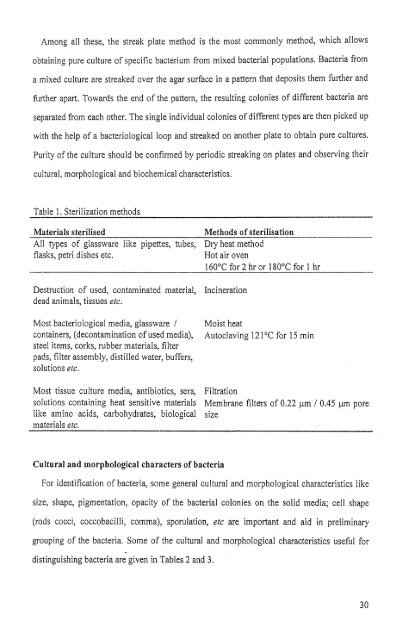, Diagnosis an-&& of Shrimp Diseases - Central Institute of ...
, Diagnosis an-&& of Shrimp Diseases - Central Institute of ...
, Diagnosis an-&& of Shrimp Diseases - Central Institute of ...
- No tags were found...
Create successful ePaper yourself
Turn your PDF publications into a flip-book with our unique Google optimized e-Paper software.
Among all these, the streak plate method is the most commonly method, which allowsob.taining pure culture <strong>of</strong> specific bacterium from mixed bacterial populations. Bacteria froma mixed culture are streaked over the agar surface in a pattern that deposits them further <strong>an</strong>dfurther apart. Towards the end <strong>of</strong> the pattern, the resulting colonies <strong>of</strong> different bacteria areseparated from each other. The single individual colonies <strong>of</strong> different types are then picked upwith the help <strong>of</strong> a bacteriological loop <strong>an</strong>d streaked on <strong>an</strong>other plate to obtain pure cultures.Purity <strong>of</strong> the culture should be confirmed by periodic streaking on plates <strong>an</strong>d observing theircultural, morphoiogical <strong>an</strong>d biochemical characteristics.- Table 1. Sterilization methodsMaterials -- sterilised .--- Methods <strong>of</strong> sterilisation -...All types <strong>of</strong> glassware like pipettes, tubes, Dry heat methodflasks, petri dishes etc.Hot air oven160°C for ------- 2 hr or 180°C for 1 hr ---Destruction <strong>of</strong> used, contaminated material,dead <strong>an</strong>imals, tissues etc.Most bacteriological media, glassware /containers, (decontamination <strong>of</strong> used media),steel items, corlts, rubber materials, filterpads, filter assembly, distilled water, buffers,solutions etc.IncinerationMoist heatAutoclaving 121°C for 15 minMost tissue culture media, <strong>an</strong>tibiotics, sera, Filtrationsolutions containing heat sensitive materials Membr<strong>an</strong>e filters <strong>of</strong> 0.22 pm 1 0.45 p~n porelike amino ,acids, carbohydrates, biological sizematerials etc.-Cultural <strong>an</strong>d morphological characters <strong>of</strong> bacteriaFor identification <strong>of</strong> bacteria, some general cultural <strong>an</strong>d morphological characteristics likesize, shape, pigmentation, opacity <strong>of</strong> the bacterial colonies on the solid media; cell shape(rods cocci, coccobacilli, comma), sporulation, etc are import<strong>an</strong>t <strong>an</strong>d aid in preliminarygrouping <strong>of</strong> the bacteria. Some <strong>of</strong> the cultural <strong>an</strong>d morphological characteristics useful fordistinguishing bacteria ari given in Tables 2 <strong>an</strong>d 3.
















